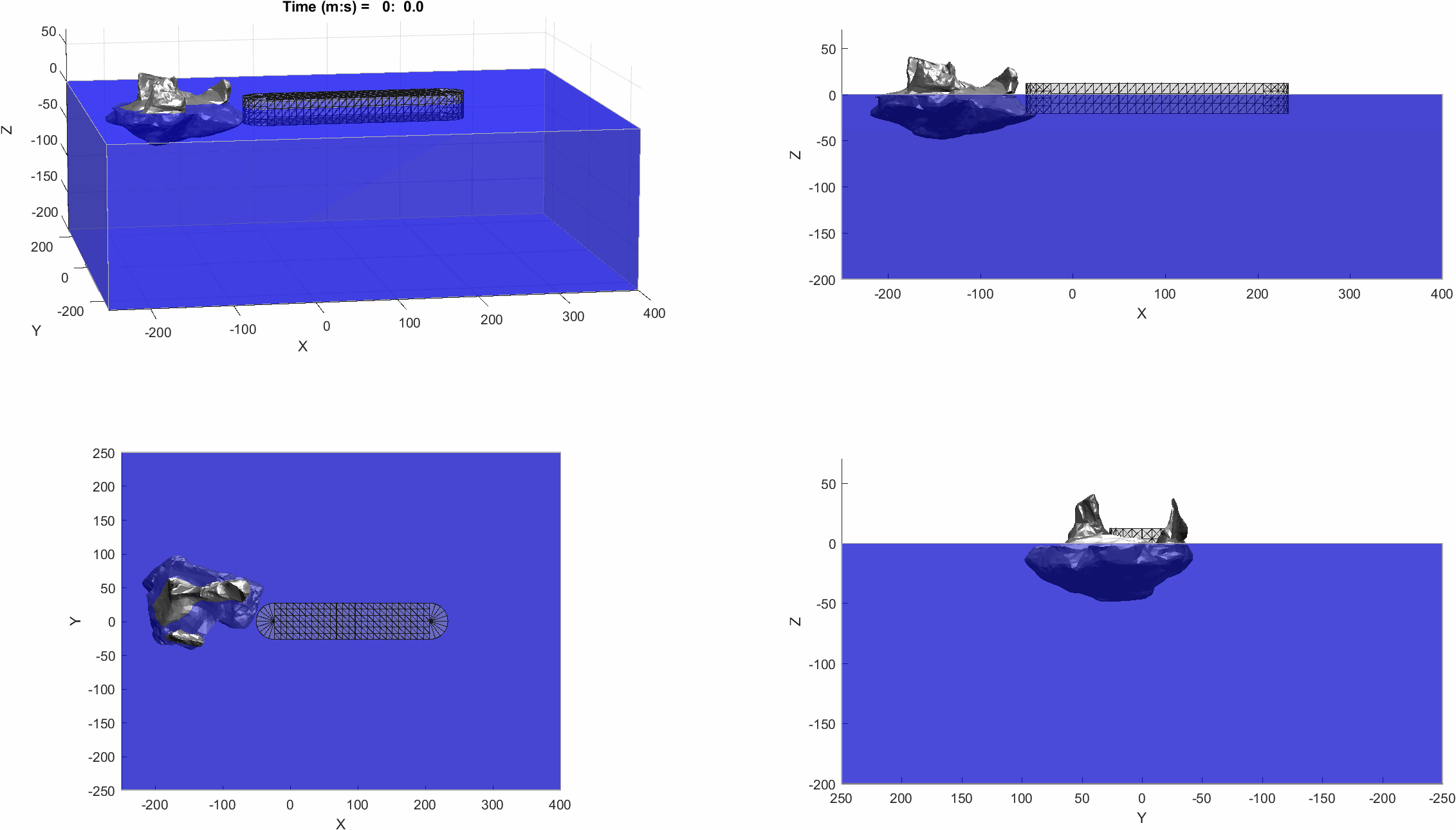17/11/2020 | Return to Latest News
on floating production systems for northern oceans
With rich oil and gas prospects emerging in Newfoundland and Labrador’s deepwater frontiers, better understanding of those regions’ metocean environments and their effects on potential development facilities is critical for safety and environmental stewardship. Given the possibility of iceberg impact, global and local ice loads must be considered when designing production options (e.g., FPSO or spar) for both platforms and mooring systems.
Existing floating productions systems on the Grand Banks were designed to disconnect quickly and move offsite if an approaching iceberg could not be diverted. While impacts with icebergs are not expected, as a further mitigating measure to standard ice management plans and procedures, the hulls were ice-strenghtened to accomodate for the extremely low probabilty event. The iceberg forces used in determining the required ice strengthening were based on the assumption that the FPSO was a fixed, rigid body; this is conservative.  Consideration of the inertial response of the vessel, restoring forces in the mooring system and acceptable hull deformation would lead to reduction in the iceberg forces developed on the hull.
Consideration of the inertial response of the vessel, restoring forces in the mooring system and acceptable hull deformation would lead to reduction in the iceberg forces developed on the hull.
While these models follow ISO 19906 recommendations and incorporate the significant advances in ice mechanics since the design of the Hibernia GBS (as well as an ever-growing cache of metocean data), ultimately leading to the robust but streamlined Hebron GBS design, they do not accurately model the responses of a floater and its mooring system in case of iceberg interaction.
More accurate models and methodologies are needed, incorporating better understanding of the physical processes involved as well as advanced analysis tools such as 3D time-domain simulations. This will reduce unnecessary conservatism in design of the floating platforms required for deepwater developments offshore Newfoundland and Labrador.
Supported by Equinor, in 2016 C-CORE worked with DNV GL to scope the R&D work needed to improve modelling of iceberg impacts on a moored platforms. In February 2020 C‑CORE, in collaboration with DNV GL and Ian Jordaan & Associates, and participation of industry, began the Joint Industry Project “Glacial Ice Impact Loads on Floaters” to address the scoped R&D gaps outside a formal project design process. Guided by an industry steering committee comprising operators, major contractors and facilities designers, the project team will work together to increase confidence in procedures for estimating actions and effects due to iceberg impacts with a moored floating platform, with the ultimate goal of an enhanced design, review and approval process for moored floating platform designs where icebergs may be present. In addition to project partner DNV GL (itself a world-class regulator), Canadian regulator C-NLOPB has been invited to participate as an observer on the project, so that new knowledge is shared among all stakeholders.
Using numerical models, computer simulations and full-scale in-field data, the project will advance knowledge in four key areas: Iceberg Crushing Pressures (including development of high pressure zones, growth in contact area and random variations in local ice pressure across interaction area); Motions of icebergs (how wave-induced motions of both the iceberg and the platform can increase the relative velocity at impact and influence the contact probability and the magnitude of the impact); Repeated Impacts (what happens if an iceberg impacts a structure multiple times before drifting away); and Probabilistic modelling of iceberg–floater interactions (advanced load calculation methods and new models/methodologies). A set of guidelines and recommendations will be prepared describing the outcomes from the project and will be made available to all stakeholders.
Ultimately, the “Glacial Ice Impact Loads on Floaters” project will help de-risk offshore development projects and reduce barriers for future deepwater developments in iceberg-prone environments. The ultimate goal of the project is an enhanced design, review and approval process due to better stakeholder alignment, and acceptance of new approaches and methodologies.
